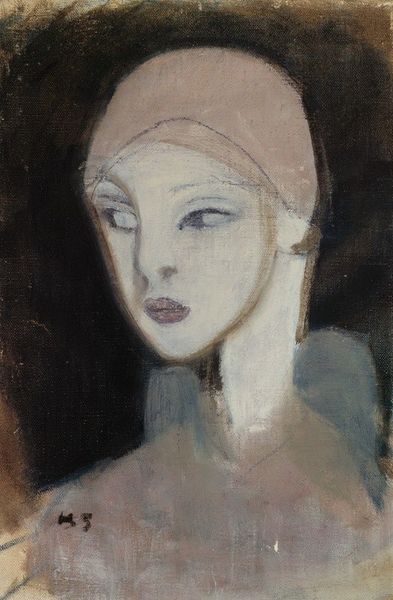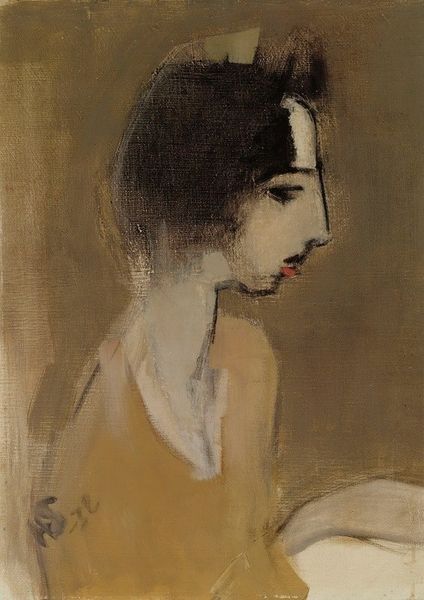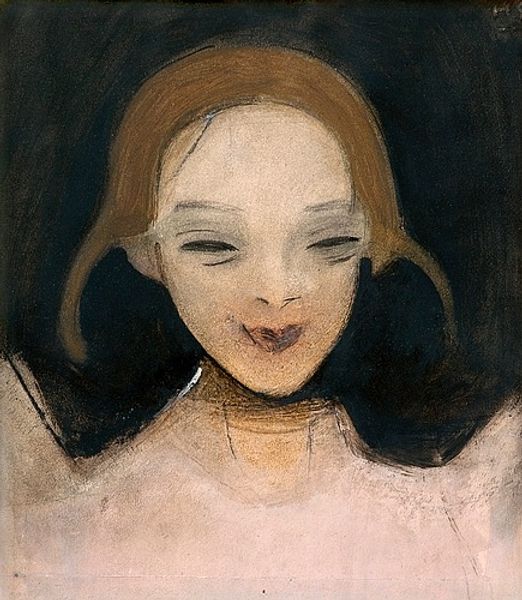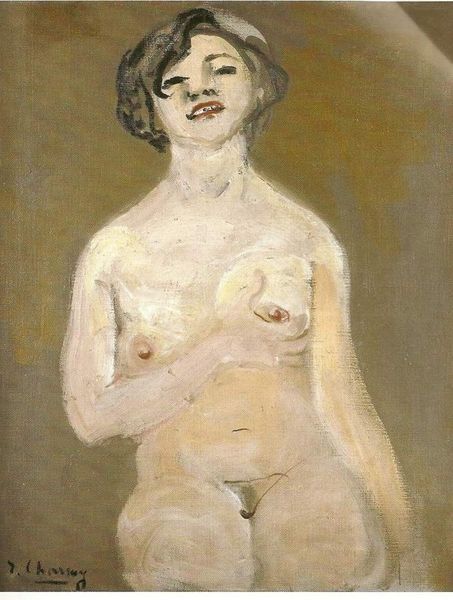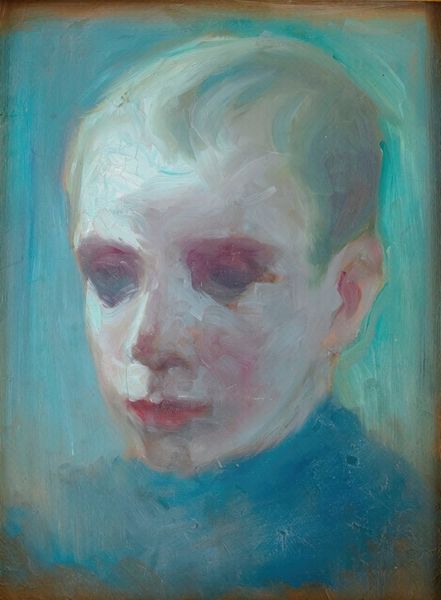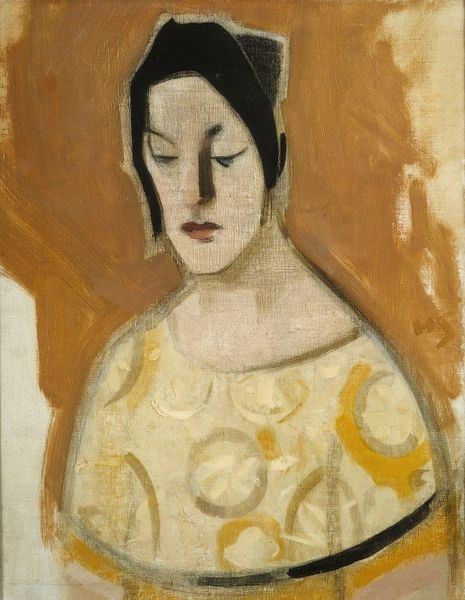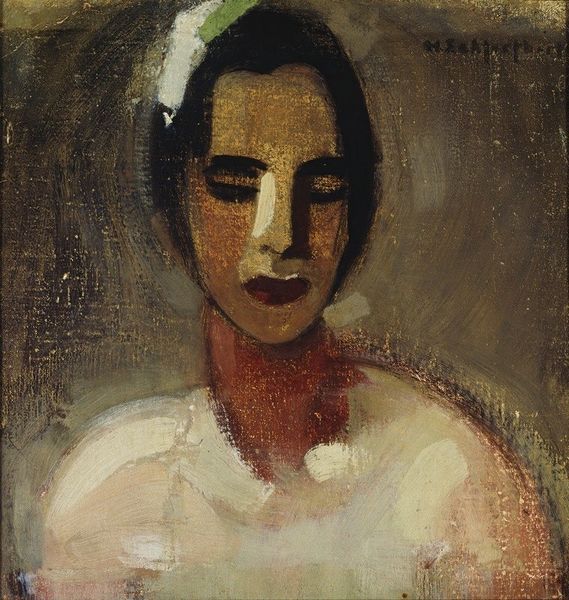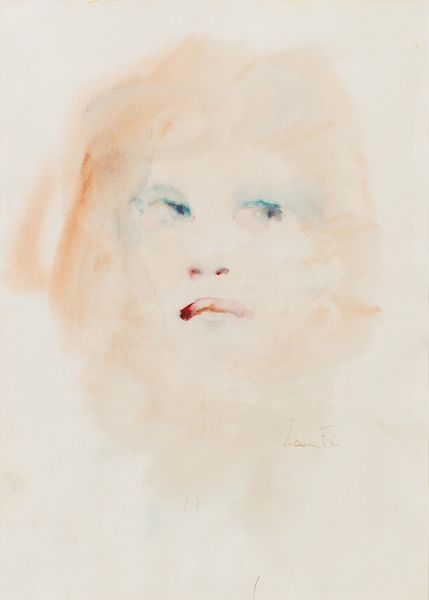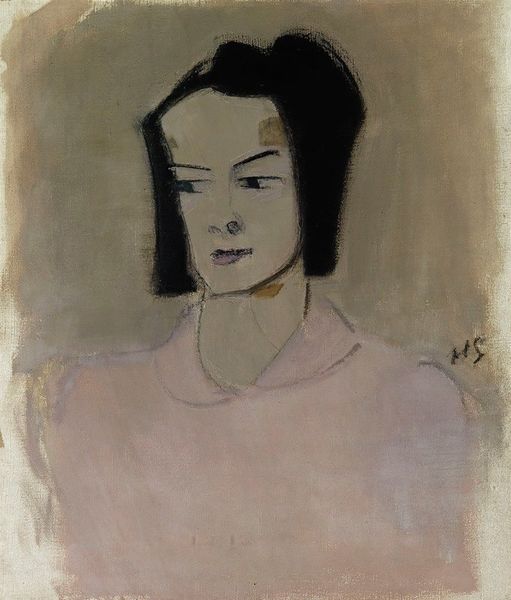
Copyright: Public Domain: Artvee
Editor: This is "Circus Girl" painted in 1916 by Helene Schjerfbeck, using oil paint. I am immediately drawn to the figure’s large, almost doll-like lips contrasting with the otherwise muted color palette. How do you interpret this work? Curator: Schjerfbeck’s work frequently engages with the history of portraiture, but always with a modern twist. Think about the role of women in the circus at the time, often romanticized or hyper-sexualized. This painting disrupts those tropes, doesn’t it? It is both alluring and unsettling in the simplicity of form. How might we consider her bold choices relating to the broader social role for women at the time? Editor: That’s interesting. It's like she’s reclaiming the image of the circus performer. The pared-down style and direct gaze feel quite intentional, especially given the broader history of women's depictions in art. Curator: Exactly! And don't forget about the societal constraints on women artists too. The gaze is unflinching, as though daring us to objectify her. Schjerfbeck uses a visible signature which shows awareness of her role in the institutional structure of art history. It places the Circus Girl very self-consciously in that canon. How much is the pose or look of the model about performance or power? Editor: I hadn’t considered that before! It shifts my perspective completely. Now I’m thinking about the power dynamics inherent in viewing and interpreting the painting itself. It also speaks volumes about the artist inserting herself into art history. Curator: The layers are intricate, and not readily apparent. What did you gain? Editor: Seeing it in a historical context—considering how the image plays with and challenges societal expectations – gives the painting a powerful charge it didn't have for me initially. Thanks!
Comments
No comments
Be the first to comment and join the conversation on the ultimate creative platform.
